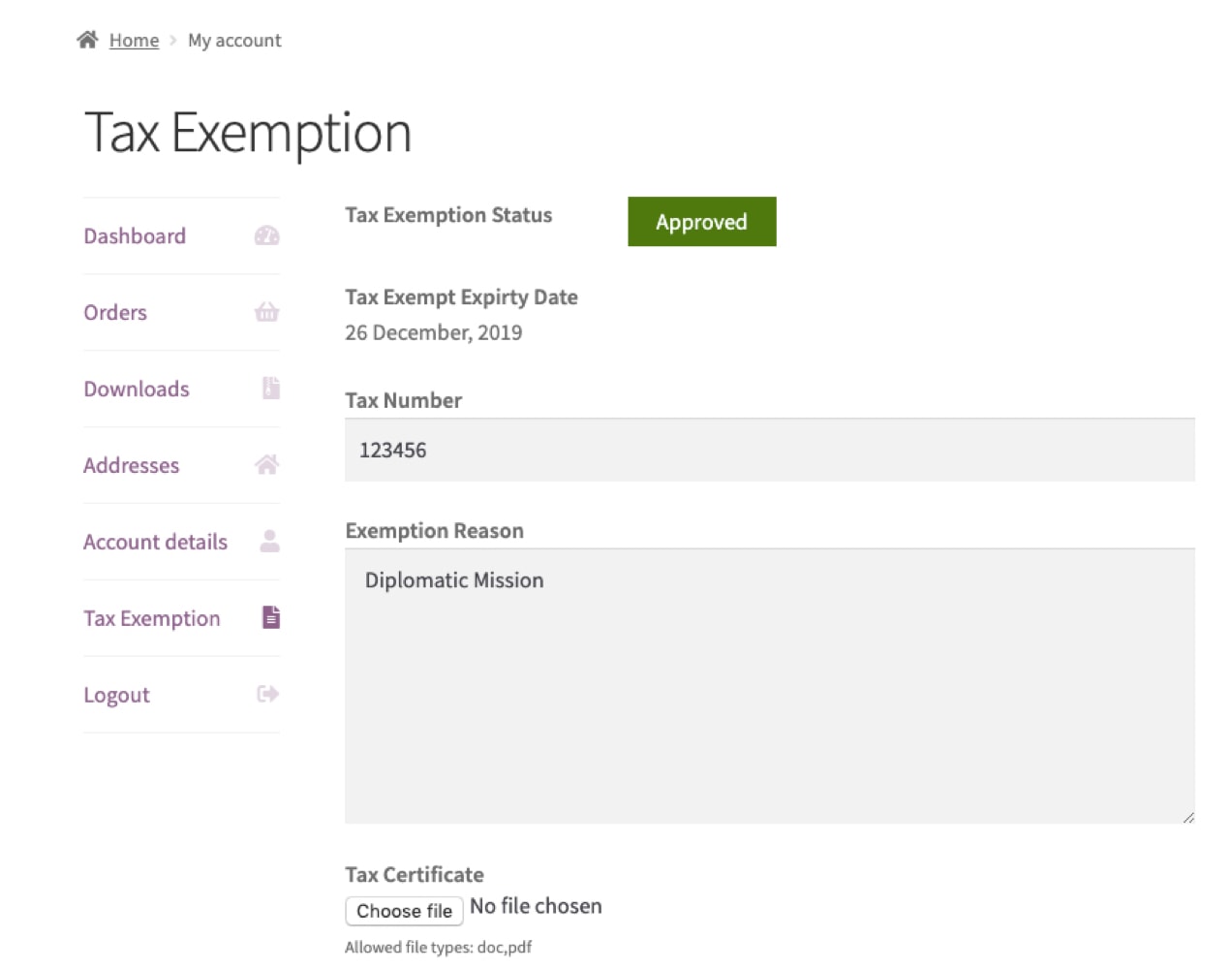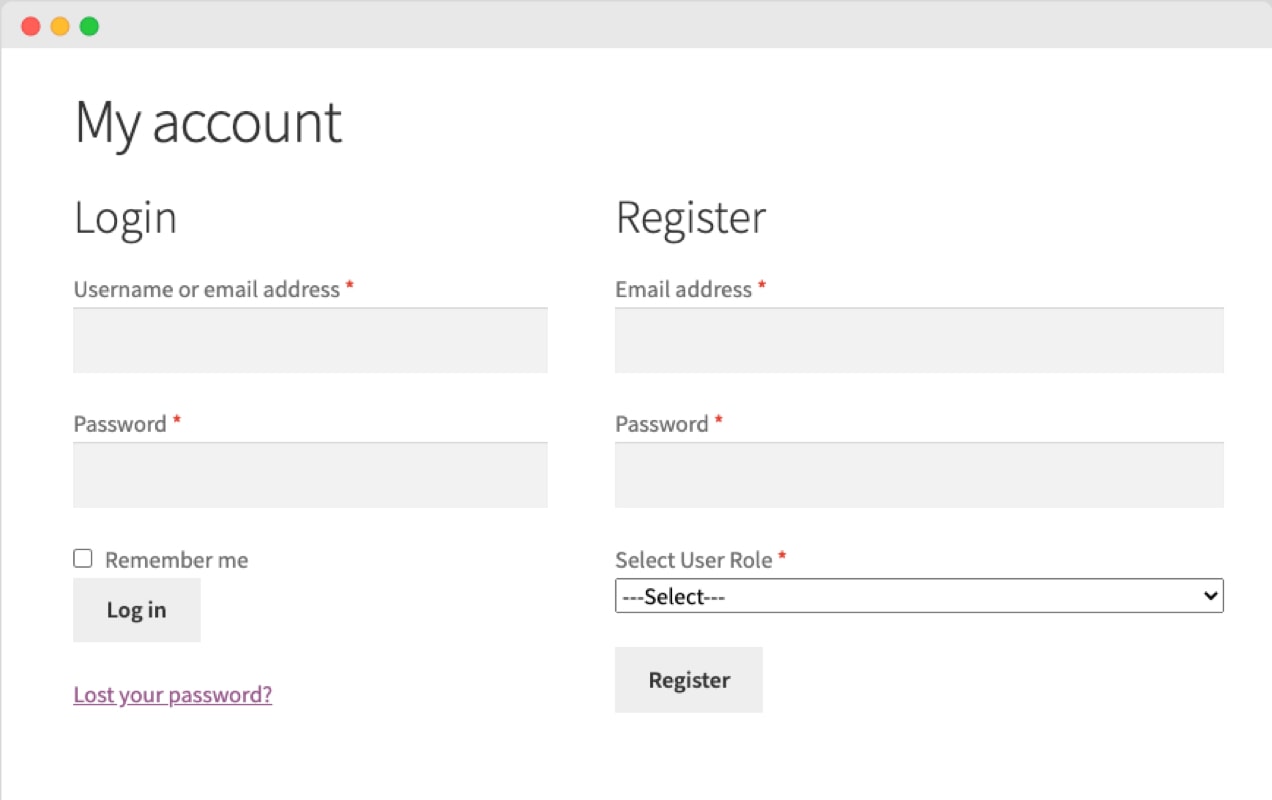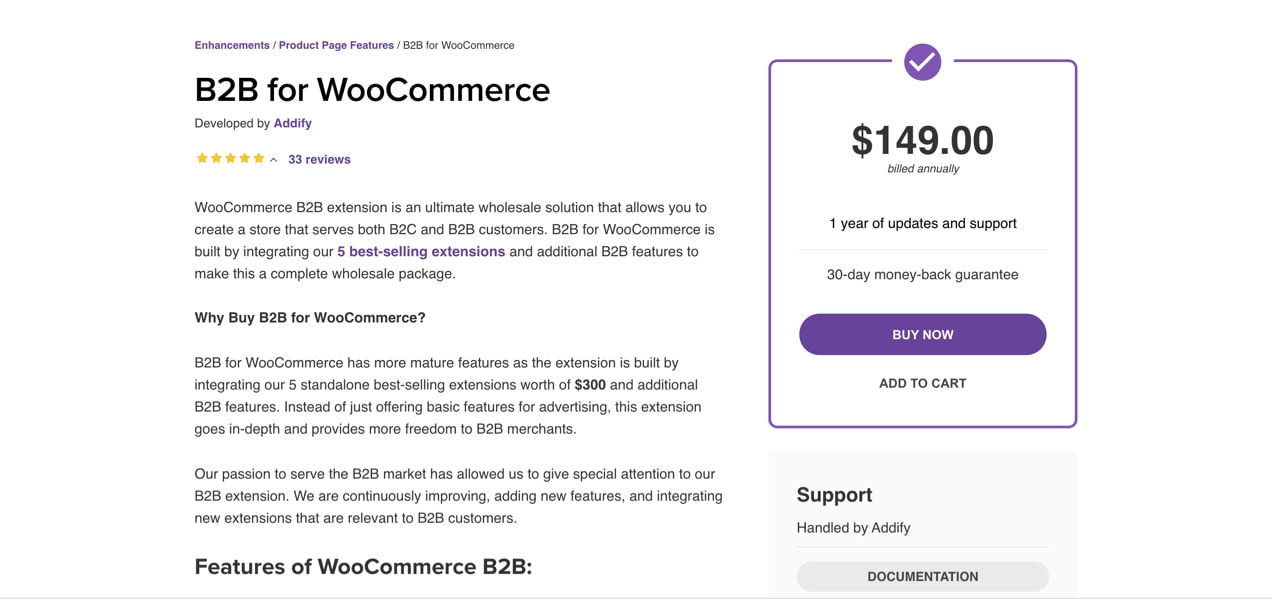Addify is a development company based out of Pakistan, that has quickly become a true success story. Started in 2019, the 35-person team already boasts sales of over $100k per month on WooCommerce.com alone.
They’re the company behind dozens of popular extensions like Custom User Registration Fields, Request a Quote, Role Based Pricing, B2B for WooCommerce, Hide Price & Add to Cart Button, and many more.
Though they originally started selling on CodeCanyon, they quickly realized the WooCommerce Marketplace was the best place to be. The company, which also develops for two other online store platforms, is now enjoying more sales at higher rates while simultaneously contributing to a better ecosystem of extensions for store owners.
Their climb to the top isn’t over yet — within a few months, they expect to add 15 team members and move into a new office.
The WooCommerce team met with co-founder Ali through Zoom to discuss the success of Addify, where they’re headed, and how other developers can follow suit.
Q. How did Addify start?
↑ Revenir en hautMyself and the two co-founders — Muhammad and Mehmood — met 12 years ago while working at another company. We became friends and remained in touch, all the while growing our skills in development and marketing. Eventually, it became clear that we could start something of our own.
Muhammad specializes in Magento and Prestashop development. He builds the technical teams when we need to develop extensions for new technologies while Mehmood oversees our WordPress development — it’s the largest team we have.
But I’m in charge of support, all of the marketing, product development research, and user experience decisions. So I have to determine what products to develop, which features to include, and how to market them to site owners.
Now we have 35 people besides us working on the team, and we’re about to move into a new building and expand to at least 50.
Q. What was your first product and how did that come about?
↑ Revenir en hautMuhammad was working on a website on Magento and needed a solution to allow certain users to be exempt from taxes on purchases. There wasn’t a good solution and so we thought — ’who else might need this?’
We looked on CodeCanyon — no solution.
We looked on WooCommerce — no solution.
Well, there was one solution a developer was selling on his website, but it didn’t include many features. We knew we could do a lot more. We created the Tax Exempt extension and made our first sale in September 2019 on WooCommerce.com.

Q. You develop exclusively for eCommerce stores. What made you decide to focus on that?
↑ Revenir en hautWe could make solutions for other industries. Each of us has been involved in developing for non-eCommerce industries before and so that’s something we could have done. But we noticed that those kinds of sites remain pretty stagnant once they’re built.
But with eCommerce, the stores are constantly adding features, looking for ways to improve the user experience, or experimenting with marketing. This means that the potential is much greater. If we provide a good product (extension) and good support, the same store owner might purchase many different solutions from us over the years. They’re probably going to subscribe to support for longer because they want more help and the latest features and updates.
Q. You develop for a couple of platforms — what made you choose WooCommerce as one of them?
↑ Revenir en hautWooCommerce holds 28% of ecommerce market share, which makes it the leading ecommerce platform, so it just makes sense to open up your products to the biggest audience possible.
Q. We were excited to see that your own website uses WordPress and WooCommerce. What made you go down this route as opposed to other options?
↑ Revenir en hautIt took us several weeks of discussion before we decided where to move. We knew all of the pros and cons of every platform, so this really made it difficult for us. There are always trade-offs. It was a big debate.
SEO is the main reason we ultimately chose WordPress. It, and WooCommerce, are very SEO-friendly.
We also knew it would be easy to develop. Compared to other platforms, for example, what we could develop in two weeks on WordPress would take two months.
The third reason we chose WordPress and WooCommerce is that we knew we’d need lots of room to expand and there would be no shortage of plugins and extensions to make this easy.
And, fourth, we determined that other platforms would be more expensive to maintain because of the server costs. So, long-term it would be more efficient for us to build on WordPress.
We wanted to get up and running as quickly as possible, and WooCommerce was a great way to do that.
Q. You originally released extensions just on CodeCanyon. What made you decide to move to the WooCommerce Marketplace?
↑ Revenir en hautWell, we knew WooCommerce.com is the official platform, so we wanted to be there. We thought we should be there as a legitimate company.
Now, our focus is on WooCommerce.com and releasing 98% of our products there exclusively because:
- After the release of our first two extensions, we realized the WooCommerce Marketplace has a huge customer base and offers more sales and revenue for vendors. So we changed our CodeCanyon profile to non-exclusive and added products to our website and the WooCommerce Marketplace to open up multiple sales channels.
- CodeCanyon doesn’t have a minimum price policy. The individual developers put their products at very low prices, which makes it impossible for companies to grow and maintain products and provide top-quality after-sale services.
- We feel more connected to the WooCommerce Marketplace team as they closely listen to our feedback.
Q: So it comes down to a more favorable environment, good support, and just a wider audience for sales?
↑ Revenir en hautYes, and WooCommerce has subscription methods for their extensions. That’s really important.
In the WooCommerce Marketplace, people can renew their subscription to continue to get updates and support.
This motivates us to keep improving the product, add features, and make sure it’s compatible. So that’s good for the store owners. And from a revenue standpoint, it’s good for us, too.
Q. How do you decide what extensions to develop?
↑ Revenir en hautAs we’ve been working in the eCommerce industry and have developed over 120 extensions for different platforms, we do have an idea of what is available. And, of course, we just try to do a good job of listening to our customers and reading forums to see what people are asking for.
Once we have a pool of extensions that looks promising to us, we perform marketing research where we evaluate the extension based on its potential and its uniqueness. If a similar product is already available, we consider what features we can add to make our product stand out.
I personally read almost every single support ticket that comes in. I’m not a developer so I can’t help them right away, but I can get a sense of what people need and have our developers work on it.
Q: Are your development decisions always market-based? Or do developers sometimes have ideas they’re passionate about that dictate what you create next?
↑ Revenir en hautWe’re really specific about what products to release. We focus completely on what the customers need and how helpful our solutions can be. That being said, we do listen to the ideas of what our developers come up with. Choose User Role is one example of an idea that came from the development team. Later on, that became an integral feature of many best sellers.

Also, there are some extensions we’ve created even though our research didn’t necessarily support them. But, we developed them anyway because our customers were asking for them.
Q. What product do you look back on as the best decision you guys have made as a company?
↑ Revenir en hautIt has to be B2B for WooCommerce. This had a really high search volume, so we knew it would be really popular if we could provide the right solution.
The problem was that “WooCommerce B2B” is a really general term. We had to figure out what functions people were really looking for when they made this search. As we figured out individual elements, we released them as their own, smaller extensions. Eventually we had a lot of robust solutions that we were able to combine into a single WooCommerce B2B extension.
Q: How do you plan for costs? Is it more expensive to develop a new product or maintain existing ones?
↑ Revenir en hautMaintaining an existing one is more expensive than creating new ones. But it’s really not about what’s expensive, it’s more about what our customers need. Quality support, new features, and regular updates to keep extensions up and running are most important.
In our opinion, providing top-quality support is expensive. But it’s important to make sure customers are happy. Happy customers leave good reviews and that’s critical for sales.
Looking at support requests when they come in also helps me see what features people want so we know what else we need to develop. And sometimes I can get out ahead of an issue so that we can solve it with the next update. That’s ultimately going to be cheaper than providing lots of ongoing support for a widespread conflict.
So support is good for customers, but it’s good for us too because it helps us identify new opportunities.
We’re also impacted and motivated by the refund policy.
Q: How does that (refund policy) impact you?
↑ Revenir en hautWell at WooCommerce, there’s a hassle-free 30-day refund policy. The customers don’t have to give a reason or anything to claim a refund.
At CodeCanyon we got a chance to ask the customer questions and help them solve their problem. At first, we definitely preferred this.
But the threat of returns motivates us to make good extensions. We have to be at our very best and continually keep up with the product. And if we do a good job, it pays off.

Q: How do you develop the product pages for your extension? You have some of the most detailed ones in the marketplace.
↑ Revenir en hautI develop and write it all myself right now. It’s really important and makes a big difference because everything should be on the product page. We’ve done so much research to know what people want, so we must communicate and include it all on the page.
We once received a review that said, “Everything is mentioned on the product page. Don’t expect anything else.” I smiled about that review because that means the product page did its job.
Q: Would you say that working with WooCommerce directly has brought you closer to the community?
↑ Revenir en hautYes, and we get to work more closely with groups like SkyVerge. That’s great.
And we have an amazing Slack platform. If we have an issue, we can reach out to other developers to sort through conflicts and come to solutions. This helps them, too, because nobody wants their product to be the source of a conflict for anyone else.
We help each other respond and find solutions and then take what we learn into account for future development plans.
Q: What’s different now from when you started?
↑ Revenir en hautWe have much better processes, a different development approach and better support teams — we test more so that when we go to market our products are even more reliable.
Q: What would you say to other developers considering joining the WooCommerce Marketplace?
↑ Revenir en hautIt all comes down to planning the right products and then providing good support. You have to do your research to decide the best extensions that people actually want. If you get that right, you’re on a good path.
We believe that aftersale support is the ultimate key for long-term success. If you don’t do it right, people may not come back a second time.
There have been instances where the customer initially claimed a refund as they bought an alternate extension and later came to us because they didn’t get proper support from the other developer.
Addify is not alone
↑ Revenir en hautThere are many developers like Addify that are finding success on the WooCommerce Marketplace. There’s room for quality extensions and developers willing to put in the extra effort to support the community.
A growing, competitive marketplace means better products for store owners, a stronger WooCommerce, and a stronger web. Interested? Learn more about joining the WooCommerce Marketplace as a developer.
About






Hmmm. I might be missing something, but this doesn’t sound as good to me as the headline figures.
> ” sales of over $100k per month on WooCommerce.com”
> “They’re the company behind dozens of popular extensions”
It’s not clear how many “dozens” is. Let’s say it’s two dozen (24). So, the average extension has sales of about $4,000 a month. But WooCommerce.Com takes, what, 50% of that? So that leaves $2,000 a month per extension.
They have a team of 35 developers? That implies that before costs, revenues are about $1,500 per developer per month (if we use $50,000 as the figure after the WooCommerce.Com cut), before any other costs.
This is a model that can only work in low-wage economies. (It’s great for woocommerce.com because they get their cut regardless of what wages anyone else is getting). Either that, or the figures in the article or wrong (or I made some significant error in this calculation). I’m happy to be enlightened!
Hi David, thanks for your message.
While I’m not at liberty to share screenshots of the vendor’s Marketplace dashboard here, here’s a little more information that might answer your questions.
Addify has 26 products with us, so a little over two dozen. Several of these are making significantly more than the $4,000 estimate, too. It’s also important to note that not all of their team of 35 works on WooCommerce.com extensions – they’re also involved in different projects for platforms such as Prestashop, Magento, and more.
Hope this helps. Take care!
They are also located in Pakistan (good for them, no offense). From average income, they can pay all 35 people, from what 1 persons costs here (Germany).
We tried to sell plugins as well (CodeCanyon), but not really a chance, when you are located in Germany.